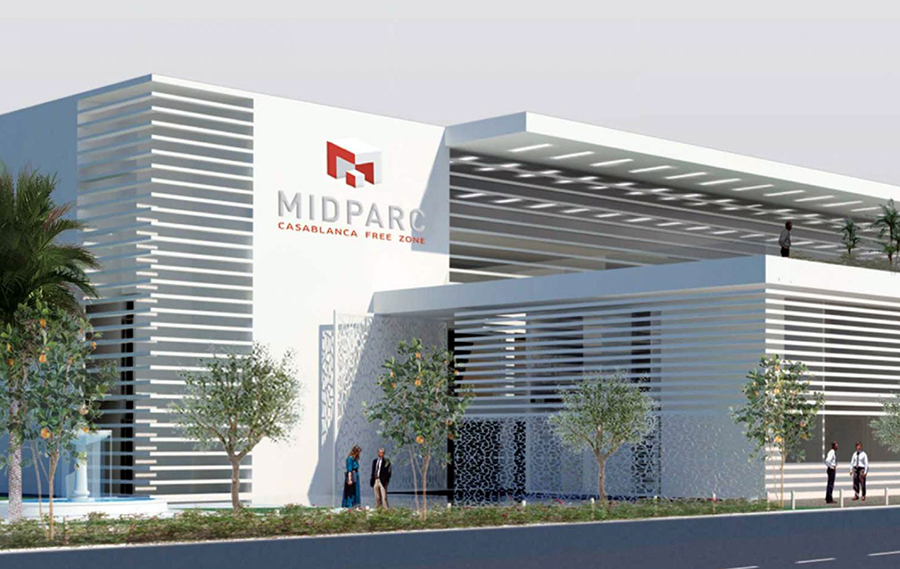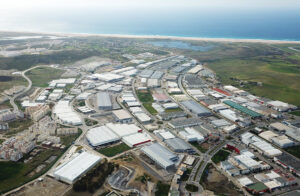Morocco zones in on facilitating industrial investments

Over 120 fully equipped world-class industrial hubs across the country provide the perfect conditions for investors to quickly establish and grow their businesses.
SHARE THIS ARTICLE:

Tanger Free Zone, Copyright@ www.tangerfreezone.com
Morocco’s industrial zones have played a key role in attracting foreign investment to the country and boosting the weight of industry in its gross domestic product from 14 percent in 2014 to 23 percent by 2020, according to the World Bank.
Indeed, in a 2021 report, the World Economic Forum attributed Morocco’s rapid development of a world-class automotive sector to two factors: a government driven to build an industry anchored on the future and the establishment of successful industrial hubs for the sector, created in conjunction with global manufacturers.
It’s not just automotive manufacturing that benefits from this approach— Morocco boasts over 150 diverse industrial zones around the country covering more than 12 000 hectares and hosting 10,000 firms. These include sector-specific sites, tech-based centers, eco-friendly parks, agribusiness facilities and export-centric industrial acceleration zones (IAZs), previously known as economic free zones.
While all zones provide competitive incentives to investors, the IAZs offer particularly attractive tax breaks, such as exemptions from value-added tax, business tax for 15 years and corporate tax for five years, followed by a reduced rate of 15 percent.
““We wanted to settle in Morocco and found the solution that met all our criteria at Midparc. We received an extraordinary welcome and support, and were able to concentrate on the essential: our job as industrialists!”
Thierry Colcombet, President, Tecalemit
Businesses in the zones gain a lot more than tax breaks, however. For instance, the WEF highlights connectivity with robust logistics networks, investment in production-enabling infrastructure and education institutes aligned with each zone’s training requirements. The zones’ management companies can supply fully equipped or greenfield sites that take account of an investor’s growth plans—and they act as one-stop shops for business services and handling procedures related to, for example, customs, authorizations and building permits.
One firm that has taken advantage of this all-inclusive concept is French aerospace manufacturer Tecalemit that has a $2-million factory in Midparc, a 125-hectare IAZ focused on aerospace, logistics, electronics and health sciences, which lies near Casablanca’s Mohamed V International Airport and has attracted $384 million in investments to date. According to Tecalemit’s president, Thierry Colcombet: “We wanted to settle in Morocco and found the solution that met all our criteria at Midparc. We received an extraordinary welcome and support, and were able to concentrate on the essential: our job as industrialists!”
Not only are set-up processes easy, the kingdom’s eagerness to support investors means they are quick, with company registration and permit authorizations being processed within 48 hours, for instance. An excellent illustration of this speed is the experience of Dika Morocco Africa (DMA), subsidiary of China-based Citic Dicastal, a global leader in aluminum rims for the automotive industry. In 2019, DMA launched a production plant in Atlantic Free Zone (AFZ), a 500-hectare site near Rabat and Casablanca operated by Medz that is home to other multinationals, including Stellantis. “We built our first factory in a record eight months. We had all the necessary support from the Medz teams for the success of this project,” Badr Lahmoudi, managing director of DMA has said. “We consider our Morocco site to be the most competitive in the entire Citic Dicastal group.”
So impressed was the group that, the very next year, it upped its investment to $350 million and opened a second facility. And this February, it started constructing a third $192-million manufacturing unit in AFZ that will be powered by the kingdom’s ample renewable energy and will take its annual production capacity to 10 million rims.
Another of Morocco’s biggest IAZs is Tanger Free Zone (TFZ), a 450-hectare site where in excess of 500 companies from around the world operate in over 30 industries—including automotive manufacturing, aeronautics, textiles, agribusiness, electronics, logistics and computer engineering—with around $672 million having been invested in the zone to date.
TFZ is integrated into a wider group of Tanger Med Zones around Tanger Med Port, Africa’s biggest transshipment platform. Thanks to its performance in attracting international players, its infrastructure quality and the growth in exports it has catalyzed, Tanger Med Zones was second in the Financial Times fDi Intelligence’s rankings of global industrial zones in 2020—the highest rating any African industrial area has ever achieved. An important element of this zonal cluster is Tanger Automotive City that hosts over 30 multinationals, including Renault. Among the many draws for occupants of the Tangier zones is proximity to 22 training centers, including the Institute for Vocational Training for the Automotive Industry, which offers subsidies of up to $3,070 a year per employee and trains 25,000 people annually.
A very different IAZ that has attracted investors like Lear Corporation, AXA and Orange Business Services is Technopolis, a prominent example of Morocco’s technology hubs linking businesses to academia through a shared service platform. Industrial activities include research and development, microelectronics, media and offshoring, and around $307 million has so far been invested in Technopolis’ vast campus that provides plug-and-play offices. This Moroccan Silicon Valley is in the center of Rabat, enabling easy international access through local airports, while the zone offers incentivized training with grants of up to $5,930 per employee as well.
To illustrate the variety in Morocco’s industrial centers, other standout parks include the 140-hectare Agropolis site in Fez-Meknès that supports companies in all areas of the agricultural value chain, which have close access to three leading training institutes: the National School of Agriculture, the Regional Agricultural Research Center, and the Agronomic and Veterinary Institute Hassan II. On the other hand, the 150-hectare Agadir Halipolis industrial city is focused on seafood processing and the Oujda Tecnopole targets cleantech industries.
In July, the government introduced a framework for the next generation of industrial zones. This will allow the mobilization of additional lands to reach a total of 13,000 hectares by 2028—enabling many more to investors to come to Morocco or to expand their operations in the future.

